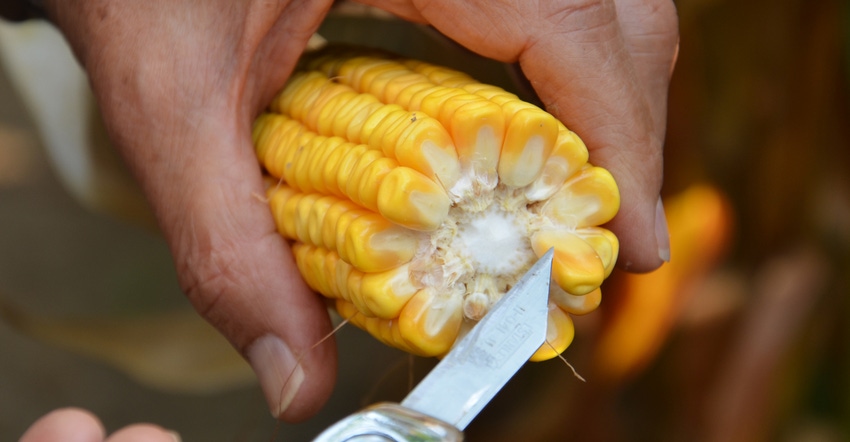July 30, 2018

One explanation many agronomists gave for high corn yields in many areas in 2017 was cool nights during late August and September across a good portion of the Corn Belt. Why would cool nights favor higher yields?
Here is an explanation from a corn breeder’s perspective:
First, let’s take an in-depth look at plant leaves and structures. Plants have microscopic “windows” called stomata that can be opened or closed as needed. These windows are used by the plants to exchange gases from the atmosphere.
During photosynthesis, plants absorb carbon dioxide from the air and water, and nutrients from the soil through roots. With the help of sunlight and heat as the energy source, they create sugars, starches, oils, proteins and many other compounds. Plants also use stomata as a defense mechanism against heat and drought. When the leaves of corn plants curl up during hot periods of the day, they’re closing these stomata to reduce transpiration and respiration rate. Plants are under stress then and aren’t very productive.
During the day, plants absorb carbon out of carbon dioxide and release oxygen back into the atmosphere through stomata. During the night, plants respire and don’t release any oxygen. Also, plants slow down and deposit products of photosynthesis inside themselves where needed. During corn’s vegetative growth, these products are used to build leaves, stalks, tassels and ears.
After pollination is complete, sugars, starches, oils and proteins are deposited in the kernels. These are the “babies,” or offspring, of the corn plant. Realize that plants aren’t worried about giving you the highest yields of grain. Like all organisms, they have only one objective: to produce as many “viable” progeny or seeds as possible.
Hot night issues
Higher temperatures speed up biological processes of plants and shorten their lives. Even the life span of people living in hotter climates without access to air conditioners is shorter than those who live in more temperate regions or who have access to air conditioning.
Corn performs better at moderate temperatures and doesn’t produce well when it is too hot. Why?
During very hot days and hot nights, it uses up some of the biomass in wasteful respiration. Respiration rate increases rapidly as the temperature increases, resulting in loss of carbohydrates synthesized during the day. This results in lower yields.
Ideally, corn plants like about 86 degrees F during the day time and 65 to 70 degrees F at night. During periods of intense stress, the rate of photosynthesis decreases. If this happens during grain fill, a plant redirect stored photosynthates to the grain from leaves and stalks. It sacrifices other parts of the plant to fill the needs of the growing embryos, just like humans in impoverished countries with extreme food shortages. A mother would rather feed her children first, even at the expense of her own health.
In corn, this behavior can result in weak stalks and lodging. Pinch stalks to determine which fields may need to be harvested first. The black layer may form earlier in these fields, resulting in smaller kernels and lower yields. Let’s hope for cooler nights during this season’s grain fill period and higher yields.
Nanda is president of Agronomic Crops Consultants LLC. Email him at [email protected] or call him at 317-910-9876.
About the Author(s)
You May Also Like






